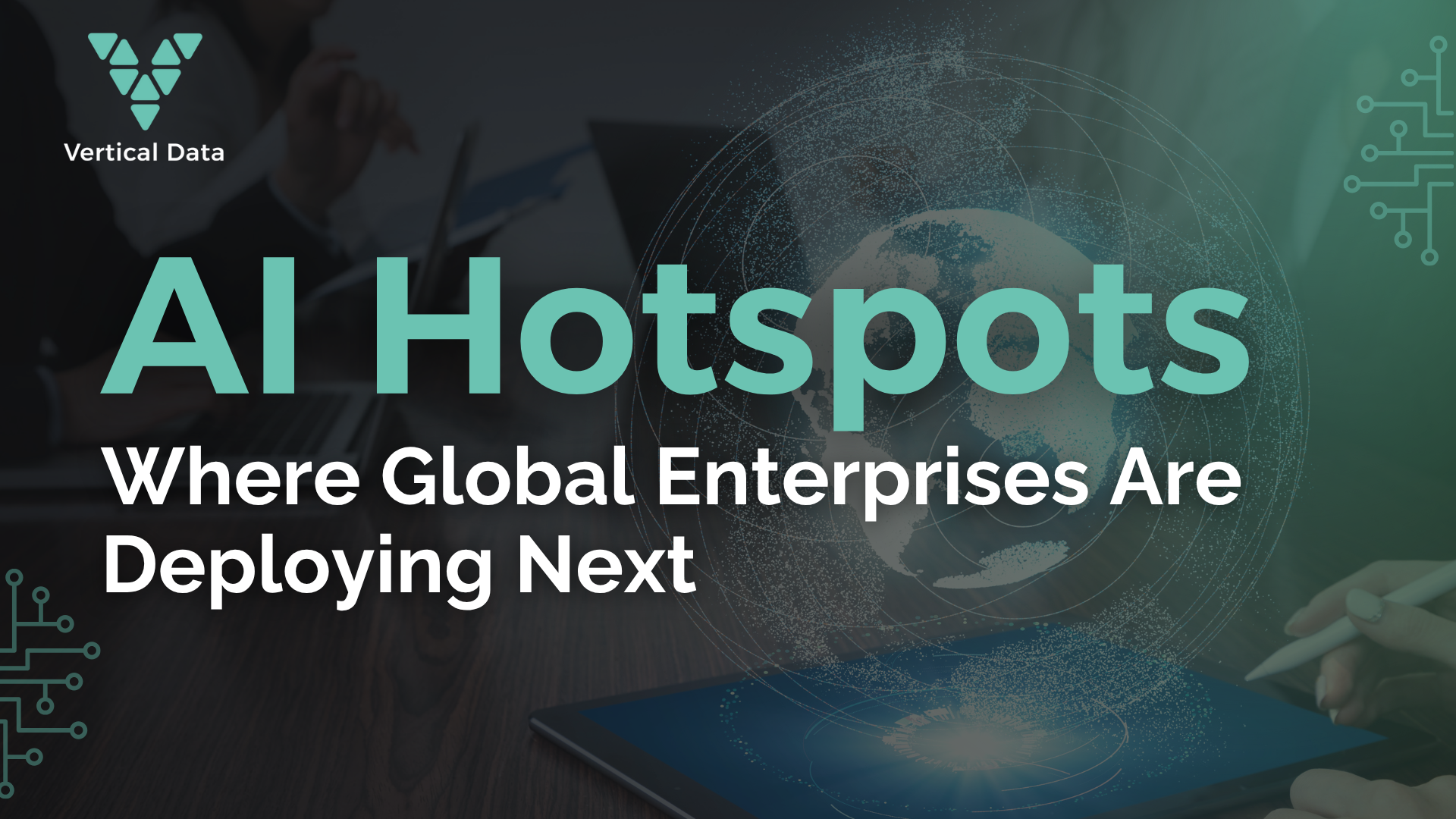Introduction
The global race for artificial intelligence supremacy has ignited a worldwide scramble for a critical, finite resource: data center capacity. As enterprises scale their AI initiatives, the strategic decision of where to deploy their infrastructure has become more critical than ever. The ideal location is no longer just about the lowest latency; it is a complex calculation involving the availability of high-density power, low-cost renewable energy, attractive tax incentives, and proximity to end users.
This has led to the emergence of new “AI Hotspots” around the globe, from the chilly plains of the Nordics to the deserts of the Middle East. For enterprises planning their geographic expansion, understanding this evolving map is key to staying competitive.
The New Geography of AI: A Global Overview
The traditional data center hubs like Northern Virginia and Silicon Valley are facing unprecedented power constraints, prompting a global search for new frontiers. This search is driven by AI’s voracious appetite for energy and the need for sustainable, cost-effective solutions. The result is a new world map of AI infrastructure, with distinct regions emerging as leaders based on their unique advantages.
| Region | Key Advantages | Major Players & Investments |
|---|---|---|
| The Nordics | Abundant, low-cost renewable energy (hydropower, wind); cool climate for natural cooling; political stability. | Microsoft ($3.2 billion in Sweden), OpenAI (first EU data center in Norway), Apple, atNorth. |
| Emerging US Hubs | Available land; lower power costs; state and local tax incentives. | Stargate Project (Texas, New Mexico, Utah), Meta (Louisiana), various projects in the Midwest. |
| The Middle East | Massive government-led investment; strategic location; rapidly growing tech ecosystem. | Google & PIF ($10 billion in Saudi Arabia), AWS & Humain ($5 billion), AMD, G42. |
| Asia-Pacific | Proximity to the world’s fastest-growing digital economies; strong government support for AI. | Projected to reach 40 percent of global data center capacity by 2030, with over $100 billion in investment. |
The Nordic Advantage: The World’s Green AI Powerhouse
The Nordic countries (Sweden, Norway, Denmark, and Finland) have become a world premier destination for sustainable AI infrastructure. Their combination of 100 percent renewable energy from hydropower and wind, a naturally cool climate that slashes cooling costs, and stable, modern power grids creates an almost perfect environment. This makes the region ideal for high-density AI deployments.
Tech giants have taken notice. Microsoft is investing $3.2 billion to expand its cloud and AI footprint in Sweden, powered entirely by renewable energy. In Norway, OpenAI has established its first European AI data center, and specialized providers like Polar are building new facilities designed for advanced liquid cooling. The region’s focus on sustainability is not just an environmental benefit; it is a significant economic advantage, offering some of the lowest power costs in Europe.
Emerging US Hubs: Beyond the Traditional Coasts
As power constraints squeeze traditional data center markets like Northern Virginia and Silicon Valley, a new generation of US regions is rising to meet AI infrastructure demand. Texas has emerged as a major player, with the Stargate Project’s flagship campus already operational in Abilene and new sites announced in Shackelford County. The state offers a compelling combination of available land, competitive power costs, and business-friendly policies.
Similarly, New Mexico and Utah are attracting significant investment as part of the Stargate expansion, while Meta is constructing a massive AI data center in rural Louisiana. These emerging hubs share common advantages: lower real estate costs, access to growing power infrastructure, and state and local tax incentives designed to attract technology investment.
The shift represents a fundamental recalibration of the US data center landscape, moving capacity closer to affordable energy sources rather than forcing energy to flow to capacity-constrained coastal markets.
The Middle East and Asia-Pacific: The Growth Frontiers
While the Nordics and emerging US markets focus on cost and sustainability, the Middle East and Asia-Pacific regions are positioning themselves as the undisputed growth frontiers through massive capital deployment and strategic government backing.
Saudi Arabia and the UAE are investing tens of billions of dollars to become regional AI powerhouses, with Google and PIF committing $10 billion to build an AI hub in Saudi Arabia, and AWS partnering with Humain on a $5 billion investment. Their ambition extends beyond infrastructure to building complete AI ecosystems that attract global talent and foster hundreds of startups.
Meanwhile, the Asia-Pacific region represents the world’s largest growth opportunity, projected to account for 40 percent of global data center capacity by 2030 with over $100 billion in investment over the next five years. The scale of digital transformation across countries like India and Southeast Asia makes proximity to these markets essential for any global enterprise. Deploying infrastructure in this region is not optional; it is critical for serving massive, fast-growing user bases with the low latency that modern AI applications demand.
Conclusion
The decision of where to deploy AI infrastructure is no longer a simple choice based on real estate prices. It is a multifaceted strategic decision that balances the cost of power, the availability of renewable energy, the regulatory landscape, and the need to be close to customers.
From the sustainable energy havens in the Nordics to the cost-competitive emerging US hubs, and from the capital-rich Middle East to the high-growth Asia-Pacific markets, the global AI map is being redrawn. Successfully navigating this new geography requires a partner with the global reach and expertise to secure capacity in these emerging hotspots.
As enterprises plan their next phase of AI-driven growth, a globally aware infrastructure strategy is not just an advantage but a necessity for survival and success.


